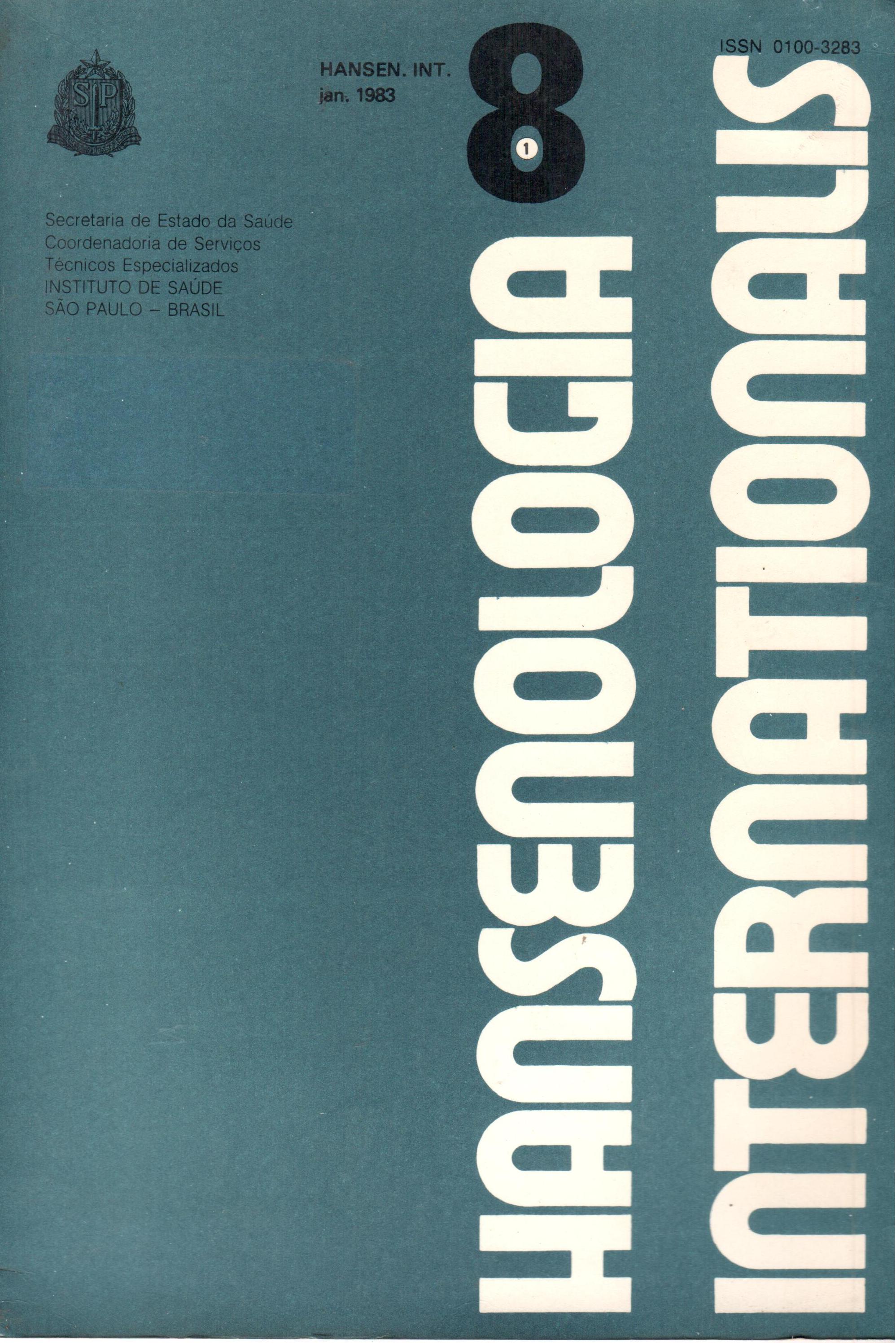Abstract
The author introduces a new diagnostic technique to test skin sensitivity in hanseniasis. Sulphuric ether boils at 35°C, i.e., practically at skin temperature. One gram of vaporized ether applied to the skin substracts 90 calories and causes a clear ice-cold sensation. By touching the cooled area with his fingertip the observer provokes a warm sensation. In hyposthetic skin that sensation of cold is diminished and in anesthetic areas there is no feeling of cold at all with this ether technique. The test is made with a small cotton ball wetted in sulphuric ether, which is lightly passed over the patient's skin. The subjective cooling sensation depends on the patient's information but sometimes it is accompanied by an objective "goose skin" aspect, which is especially useful when testing children and other non-cooperative persons. The technique is quite simple and much more practical and precise than the classic warm/ cold tubes. It permits the mapping of the whole skin surface for disesthesk areas in a few minutes. Precautions regarding the use of ether are given. A. Rotberg.
References
2 BAZETT, H.C.; McGLONE, B.; BROCKLEHURST, RJ. Temperatures in tissues which accompany temperature sensations. J. Physiol., 69:88-112, 1930.
3 BRESANI SILVA, F. El sindrome neural leproso: ensayo de sistematización. Lima, Rev. Peruana de Salud Publics, 1958. 470p. il.
4 DALLENBACH, K.M. The temperature spots and end-organs. Amer. J. Psychol., 89:402-427, 1927.
5 GUILFORD, J.P. & LOVEWELL, E.M. The touch spots and the intensity of the stimulus. J. Gen. Psychol., 15: 149-159, 1936.
6 HAGEN, E.; KNOCHE, H.; SINCLAIR, D.C.; WEDDELL, G. Role of specia- lized nerve terminals in cutaneous sensibility. Proc. Roy. Soc. B., 141: 279-287, 1953.
7 KHANOLKAR, V.R. Studies in the histology of early lesions in leprosy. New Delhi, Indian Council of Medical Research, 1951. 18p.
(Special Report Series, 19).
8 LELE, P.P.; WEDDELL, G.; WILLIAMS, C. Relationship between heat transfer, skin temperature and cutaneous sensibility. J. Physiol., 126:206-234, 1954.
9 MUDANÇAS de estado. In: TERMOLOGIA. Rio de Janeiro, Paulo Azevedo, 1936. Cap. 3. (Coleção F.T.D.: Psysica ; curso superior).
10 SAMPAIO, S.A.P. & MARTINS CAS- TRO, R. Lepra. In: Derma- tologia, basica. São Paulo, Artes Médicas, 1974. Cap. 20, p.117-122.
11 SAMPAIO, S.A.P.; MARTINS CASTRO, R.; RIVITTI, E.A. Lepra. In: Dermatologia básica. 2. ed. São Paulo, Artes Médicas, 1978. Cap. 22, p . 217-226.
12 SAMPAIO, S.A.P.; MARTINS CASTRO, R.; RIVITTI, E.A. Métodos semióticos complementares. In: Dermatologia básica.
2.ed. São Paulo, Artes Médicas, 1978. Cap. 4, p.39-40.
13 SINCLAIR, D.C. Cutaneous sensibility. London, Oxford University Press, 1967. 305p.
14 SINCLAIR, D.C.; WEDDELL, G.; ZAN- DER, E. Relationship of cutaneous sensibility to neurohistology in human pinna. J. Anat.,
86:402-411, 1952.
15 WEDDELL, G. Studies related to the mechanism of common sensibility. In: MONTAGNA, W. ed. Advances in biology of skin: cutaneous inner- vation. Oxford, Pergamon, 1960. v.1, p.112-158.
16 WEDDELL, G.; PALLIE, W.; PALMER, E. Studies on innervation of skin, origin, course and number of sensory nerves supplying rabbit ear. J. Anat., 89:162-174, 1955.
This journal is licensed under a Creative Commons Attribution 4.0 International License.
